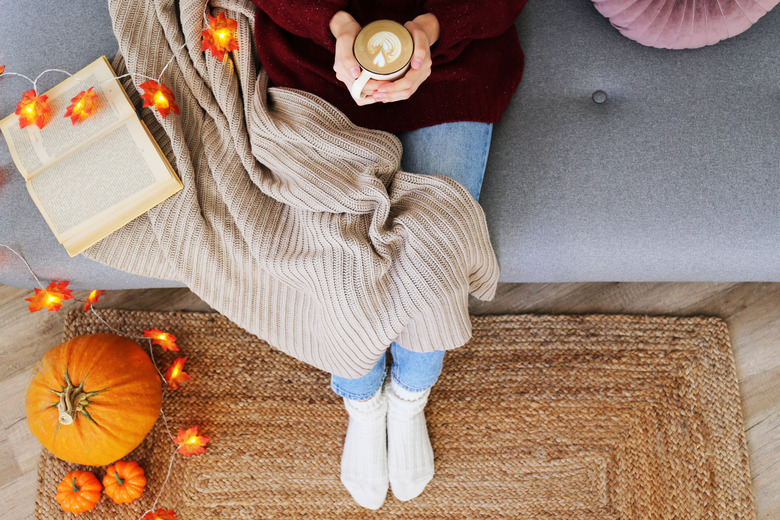The Science Of Why We Love Pumpkin Spice
We're well in autumn, and you know what that means! Gorgeous fall foliage (click here to learn why the leaves change color in the autumn!), crisp autumn air and earlier evenings.
Oh yeah, and another thing you'll see? Pumpkin spice everything. From classic pumpkin spice lattes to coffee creamers, candy corn, chewing gum and even – yikes – pumpkin spice SPAM, it's hard to go to any store and not see pumpkin everywhere.
Where did it all come from? Well, Starbucks introduced the pumpkin spice latte in 2003, and since then we've seen an explosion in pumpkin spice products. Along with cozy sweaters and turkey, pumpkin spice treats are one of the cultural landmarks of fall.
And sure, a pumpkin spice latte is tasty, but why is pumpkin spice so popular? To do that, we need to look to psychology. So let's take a trip inside your mind!
The Science of Pumpkin Spice
The Science of Pumpkin Spice
First, let's chat about what pumpkin spice actually is. While everyone has their own recipe, pumpkin spice usually mixes warming spices like ginger, cinnamon, allspice, cardamom, clove and sometimes lemon peel. The spices are pungent, which means they have distinct and easily recognizable scents.
And it turns out, that scent is key to explaining why pumpkin spice is so popular. As Longwood University psychology professor Dr. Catherine L. Franssen explained to CNN, pumpkin spice reminds us of homemade comfort foods. And because smell is one of the strongest senses linked to memory, that association to comfort food can feel particularly powerful.
So when you're sipping your PSL, you're really stimulating your amygdala – the part of your brain that links pumpkin spice to good memories. So you'll feel the happy feelings associated with, say, Thanksgiving pumpkin pie or mom's homemade cookies and treats.
But There's More to Your PSL Addiction
But There's More to Your PSL Addiction
OK, so part of why we love pumpkin spice is simple – it reminds us of happy memories and makes us feel good.
But our brain does more than just associate pumpkin spice with the past, it actually anticipates happy memories when you reach for pumpkin spice flavored treats. As Franssen told CNN, you'll actually anticipate tapping into those happy memories when you reach for a pumpkin spice treat – and the more pumpkin spice you consume, the more you'll crave it.
Plus, there's the fact that, well, lots of pumpkin spice treats are loaded with fat and sugar. While added sugar and some fats aren't always the healthiest options, they can trigger the reward system in your brain – which is why junk food can be addictive.
Pumpkin spice treats are also typically only available a few months a year. That feeling of scarcity can make you overindulge, knowing you won't be able to treat yourself again until next year.
The Good News?
The Good News?
While it's healthy to limit your sugar intake, a few pumpkin spice treats as part of a balanced diet can't hurt. And, what's more, you can trick your brain into loving more healthy foods, too.
Add a sprinkle of pumpkin spice to a healthy roasted pumpkin soup to trigger those same happy memories – sans the added sugar – or add pumpkin spice mix to sweet potatoes to make oven fries. Sure, it's not the typical pumpkin spice treat, but it is a healthy way to make pumpkin spice part of your daily routine.
At least until December, when you'll move on to eggnog and gingerbread!
References
- Inc.: The Pumpkin Spice Latte was Invented by a Stanford Graduate (and 7 More Things You Didn't Know About Starbucks)
- ScienceDaily: Scientists uncover new connection between smell and memory
- CNN: What is 'pumpkin spice,' anyway? And why do we crave it?
- NBC: Why do we like pumpkin spice so much? The weird science behind PSL.
Cite This Article
MLA
Tremblay, Sylvie. "The Science Of Why We Love Pumpkin Spice" sciencing.com, https://www.sciencing.com/why-we-love-pumpkin-spice-13722455/. 21 October 2019.
APA
Tremblay, Sylvie. (2019, October 21). The Science Of Why We Love Pumpkin Spice. sciencing.com. Retrieved from https://www.sciencing.com/why-we-love-pumpkin-spice-13722455/
Chicago
Tremblay, Sylvie. The Science Of Why We Love Pumpkin Spice last modified August 30, 2022. https://www.sciencing.com/why-we-love-pumpkin-spice-13722455/
